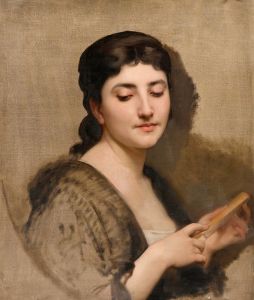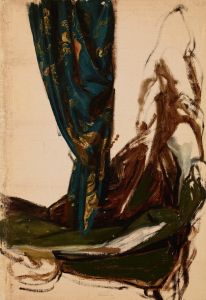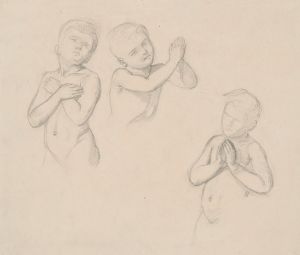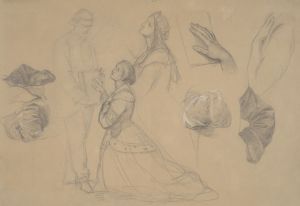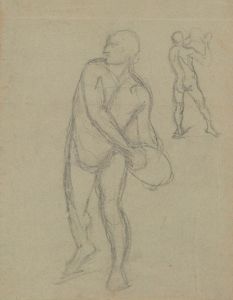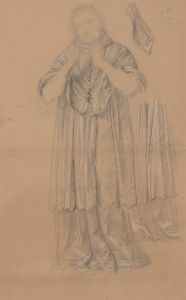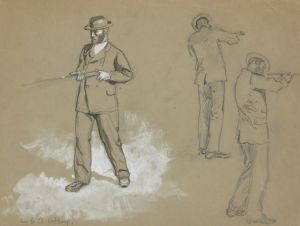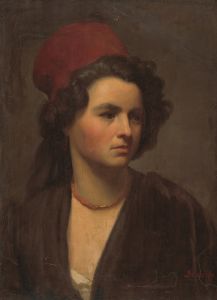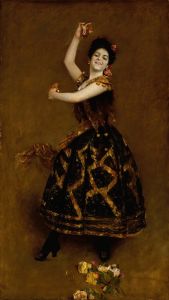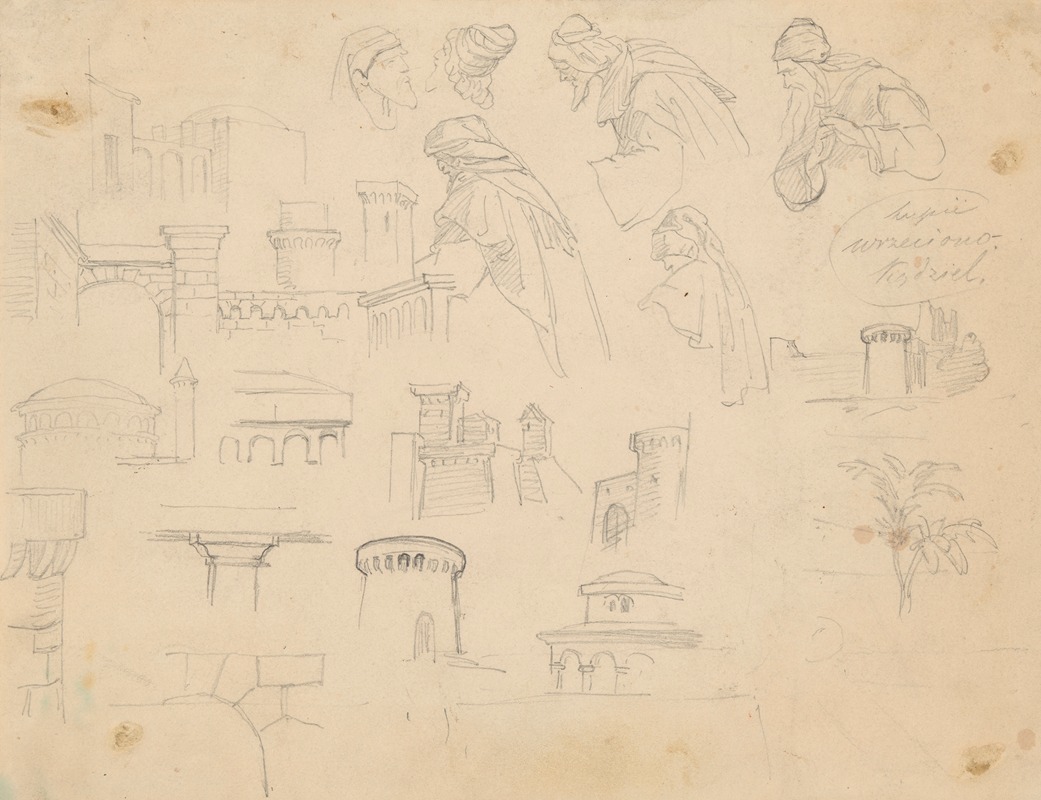
Sketches of medieval defensive structures and male figures with turbans
A hand-painted replica of Józef Simmler’s masterpiece Sketches of medieval defensive structures and male figures with turbans, meticulously crafted by professional artists to capture the true essence of the original. Each piece is created with museum-quality canvas and rare mineral pigments, carefully painted by experienced artists with delicate brushstrokes and rich, layered colors to perfectly recreate the texture of the original artwork. Unlike machine-printed reproductions, this hand-painted version brings the painting to life, infused with the artist’s emotions and skill in every stroke. Whether for personal collection or home decoration, it instantly elevates the artistic atmosphere of any space.
Józef Simmler (1823–1868) was a Polish painter known for his historical and portrait works. Among his lesser-known pieces is Sketches of Medieval Defensive Structures and Male Figures with Turbans, a drawing that reflects his interest in historical themes and architectural details. This artwork consists of a series of sketches, combining depictions of medieval fortifications with studies of male figures wearing turbans. The piece demonstrates Simmler’s attention to detail and his ability to capture both architectural elements and human figures with precision.
The sketches of defensive structures suggest an interest in medieval architecture, possibly inspired by castles, fortresses, or other fortified buildings. These elements are drawn with a focus on structural features such as towers, battlements, and walls, showcasing Simmler’s skill in rendering architectural forms. The inclusion of male figures wearing turbans indicates an exploration of cultural or historical subjects, though the specific context or inspiration for these figures is not documented. Turbans were often associated with Middle Eastern or Ottoman cultures, which may reflect Simmler’s engagement with themes beyond his immediate Polish heritage.
Simmler’s works often drew on historical and cultural motifs, and this piece aligns with his broader artistic interests. However, there is limited information available about the specific purpose or commission of this drawing. It is unclear whether it was a preparatory study for a larger work, a standalone piece, or simply an exercise in sketching. The combination of architectural and human elements suggests that Simmler was exploring the interplay between setting and character, a theme present in some of his other works.
As a sketch, this artwork provides insight into Simmler’s creative process and his ability to balance technical precision with artistic expression. While it is not among his most famous works, it contributes to the understanding of his artistic range and interests. Further details about the drawing, including its current location or provenance, are not widely documented.





